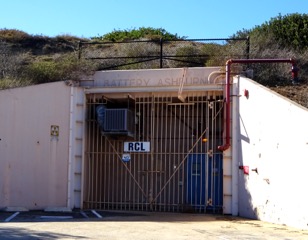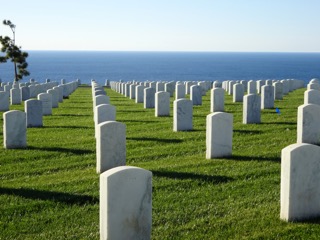“Could it happen here?”
That’s the question that was asked in Southern California 74 years ago. Dec. 7marks the anniversary of Japan’s surprise attack on Pearl Harbor, the U.S. naval base near Honolulu. Two hours of bombing killed more than 2,000 Americans and wounded 1,000 more. Eight battleships were damaged or destroyed, as were nearly 200 airplanes.
Congress approved a declaration of war against Japan the next day, and within a week, Japanese allies Germany and Italy declared war on the United States. World War II had been raging for over two years, but it took just a few days for the American people to go from reading about it in newspapers to living it in full color.
In San Diego, a principal staging port for troop, supply and naval convoys in the Pacific, blackouts went into effect. Camouflage netting covered airports, military bases, and the Pacific Coast Highway. Residents kept buckets of sand in their homes to smother fires in case of enemy bombing. If Hawaii had been hit, they wondered, would the West Coast be next?
People in Los Angeles thought so on Feb. 23, 1942, when a lone Japanese submarine approached the shore and fired at an oil facility near Santa Barbara. The next night U.S. troops watched the skies over L.A. and fired 1,440 rounds at what they thought might be Japanese planes. Newspapers reported that civilians had seen Japanese tanks in Malibu Canyon.
On the Point Loma peninsula in San Diego, the soldiers at Fort Rosecrans were put on 24-hour alert as bayonets, gas masks and ammunition were issued. The only anti-aircraft weapons available were World War I-era machine guns, and the men of the 19th Coast Artillery set them up in a hurry.
But no weapon in the Fort Rosecrans arsenal could have challenged Japan’s battleships, which carried nine 18.1-inch guns with a range of 28 miles. The U.S. Army rushed plans for two guns, 68 feet long, that would fire a projectile 16 inches in diameter at a target up to 26 miles away.
Construction for the weapon known as Battery Ashburn included a giant casement of reinforced concrete, covered by tons of earth, to protect it from a direct hit by enemy battleships or aircraft. When the 46-ton guns were transported to Point Loma, the solid rubber tires of the tractor-trailers carved 3-inch ruts into the asphalt roadway.
Completed in 1944, Battery Ashburn, along with Battery Humphreys, two 6-inch guns with a range of 15 miles, joined Battery Strong and Battery Point Loma (installed in 1941), Battery Whistler (1918), Battery McGrath (1900), and Battery Calef/Wilkeson (1898) in the arsenal of coastal defenses.
It’s a useful reminder that the war on terror is not our first rodeo.
Today the batteries of Fort Rosecrans are part of the Cabrillo National Monument, site of the Old Point Loma Lighthouse, where World War II signal crews used lights and Morse code to contact ships approaching San Diego harbor. If the ships responded with the correct code, submarine nets at the harbor entrance were lowered to allow them to proceed. We always screen visitors during wartime.
Point Loma, for all its tourists and whale-watching and coin-op binoculars pointed at spectacular views, is a somber place. On the hill high above the Pacific, 50,000 veterans are buried in the Fort Rosecrans National Cemetery, their white headstones facing the ocean or the bay, silently watching.
Dec. 7 reminds us that danger can be closer than we think. And that the U.S. defense budget is high for a reason.
Some of the 50,000 veterans’ graves at the Fort Rosecrans National Cemetery on the Point Loma peninsula in San Diego. (Photo by Susan Shelley)

This reinforced concrete casement at Fort Rosecrans on Point Loma housed massive guns installed during World War II to defend against Japanese battleships. (Photo by Susan Shelley)


